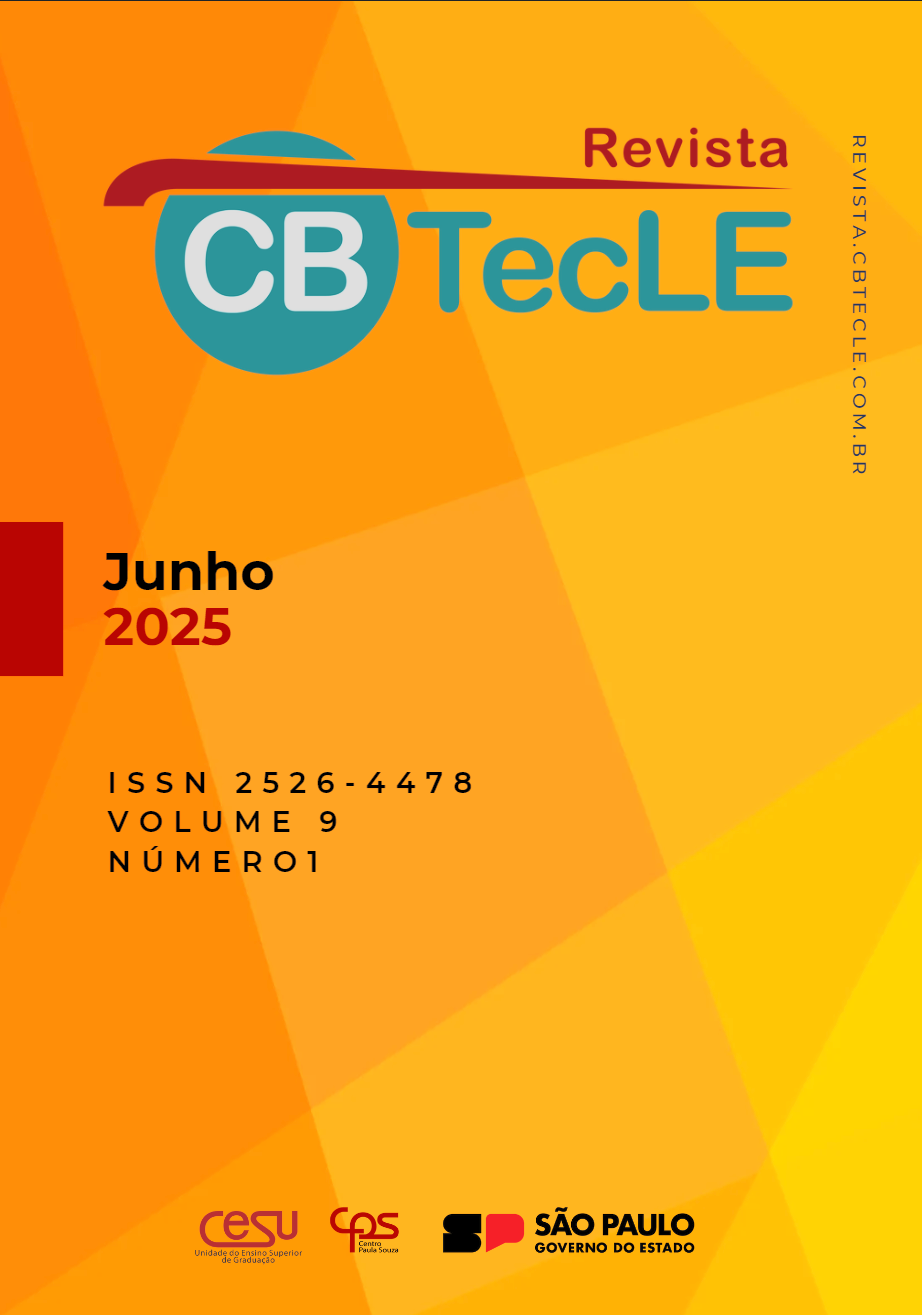USANDO A LITERATURA EM INGLÊS PARA FALAR SOBRE VARIAÇÃO LINGUÍSTICA NAS AULAS DE LÍNGUA ESTRANGEIRA
Palabras clave:
Literatura, Sociolinguística, Variação linguísticaResumen
Este relato de experiência tem o objetivo de apresentar um projeto realizado com alunos do 1º ano do ensino médio de uma escola bilíngue. Durante as aulas de inglês, os alunos puderam entrar em contato com a obra “The Hate U Give”, da autora Angie Thomas. O livro fala sobre questões sociais e a linguagem tem um papel de destaque em alguns momentos da obra. Ao longo da leitura, os alunos puderam analisar o comportamento linguístico da personagem principal do livro, Starr, nos dois principais cenários dos quais ela fazia parte: (i) seu bairro, nos subúrbios; e (ii) sua escola particular. Fishman (2000) defende que contextos específicos de comunicação criam "domínios de uso", fazendo com que os falantes usem certas variedades linguísticas para poderem participar de quaisquer interações que ocorram ali. Para Starr, isso significaria adaptar sua variedade de inglês para uma versão mais padrão sempre que estivesse em sua escola. Esses momentos foram registrados pelos alunos e, após pesquisas sobre preconceito linguístico (ver Bagno, 2007) e sobre como falantes podem estabelecer a comunicação entre si (ver Soares, 2003), um pequeno artigo foi escrito. Esse projeto auxiliou os alunos no entendimento sobre a formação da identidade linguística de um indivíduo.
Citas
ALLPORT, G. W. The Nature of Prejudice. Cambridge: Cambridge, Mass, Addison-Wesley Pub. Co, 1954.
BAGNO, M. Preconceito lingüístico: o que é, como se faz. 49ª. ed. São Paulo: Loyola, 2007.
BORTONI-RICARDO, S. M. Nós cheguemu na escola, e agora? Sociolinguística e educação. São Paulo: Parábola, 2005.
BRASIL. Ministério da Educação. Base Nacional Comum Curricular. Brasília, 2018.
BRITISH COUNCIL. Learning English in Brazil. 2014. Disponível em https://www.britishcouncil.org.br/sites/default/files/learning_english_in_brazil.pdf. Acesso em 8 jan. 2025.
CAMBRIDGE ENGLISH. Assessing Speaking Performance – Level C1. 2011. Disponível em https://www.cambridgeenglish.org/images/168620-assessing-speaking-performance-at-level-c1.pdf. Acesso em 13 out. 2022
DE LEÓN RODRÍGUEZ, D., BUETLER, K. A., EGGENBERGER, N., LAGANARO, M., NYFFELER, T., ANNONI, J. M., & MÜRI, R. M. The Impact of Language Opacity and Proficiency on Reading Strategies in Bilinguals: An Eye Movement Study. Frontiers in psychology, 7, 649, 2016.
DERWING, T. M. & MUNRO, M. J. Pronunciation fundamentals: Evidence-based perspectives for L2 teaching and research. John Benjamins Publishing Company, 2015.
FINLEY S. Learning Nonadjacent Dependencies In Phonology: Transparent Vowels In Vowel Harmony. Language, 91(1), 48–72, 2015.
FISHMAN, J. A. Who speaks what language to whom and when? In: WEI, L. (Org.). The Bilingualism Reader. Londres: Routledge, 2000.
GARDNER-CHLOROS, P. Contact and Code-Switching. Cambridge: Cambridge University Press, 2009.
GNERRE, M. Linguagem, escrita e poder. S. Paulo, Editora Martins Fontes, 1985.
GOLUBOVIĆ, J., & SOKOLIĆ, N. “Their language sounds aggressive”: A matched-guise study with Serbian and Croatian. In C. Gooskens & R. van Bezooijen (Eds.), Phonetics in Europe: Perception and production, pp. 25–57, 2013.
IELTS SPEAKING. Bands Descriptors. 2019. Disponível em https://www.ielts.org/-/media/pdfs/speaking-band-descriptors.ashx?la=en . Acesso em 20 out. 2022.
JENKINS, J. English as Lingua Franca: Interpretations and attitudes. World Englishes, 2009.
KACHRU, B. B. The Other Tongue. English Across Cultures. Urbana, Ill. University of Illinois Press, 1982.
KERSWILL, P. Dialect levelling and geographical diffusion in British English. In: D. Britain and J. Cheshire (eds.) Social dialectology. In honour of Peter Trudgill. Amsterdam: Benjamins. 223-243, 2003.
KOCH, I. V. Introdução à linguística textual: trajetória e grandes temas. Contexto, São Paulo, 2015.
LABOV, W. Sociolinguistic Patterns. Philadelphia: University of Pennsylvania Press, 1972.
LEITE, M. Q. A norma linguística: conceito e características. I Simpósio nacional sobre a intolerância. Preconceito e intolerância lingüísticos: conceitos e características. 2006.
MUFWENE, S. The Ecology of Language Evolution (Cambridge Approaches to Language Contact). Cambridge: Cambridge University Press, 2001.
OSBORNE, D. M. Systematic differences in consonant sounds between the interlanguage phonology of a Brazilian Portuguese learner of English and standard American English. Ilha do Desterro, 55, 111-132, 2008.
SHARMA, L. R. Significance of Teaching the Pronunciation of Segmental and Suprasegmental Features of English. Interdisciplinary Research in Education, 6(2), 63-78, 2021.
SOARES, M. Letramento: um tema em três gêneros. Ceale: Belo Horizonte, 2003.
SPINE MAGAZINE. Designing the cover for The Hate U Give. 2017. Disponível em https://spinemagazine.co/articles/the-hate-u-give. Acesso 11 jan. 2025.
TOEFL IBT. Independent Speaking Rubrics. 2019. Disponível em https://www.ets.org/s/toefl/pdf/toefl_speaking_rubrics.pdf. Acesso em 20 out. 2022.
THOMAS, A. The Hate U Give. London, England: Walker Books, 2017.
TWAIN, M. The Adventures of Huckleberry Finn. London; New York: Penguin Books, 1994.
WALKER, R. Teaching pronunciation of English as a Lingua Franca. Oxford, UK: Oxford University Press, 2010.
WOLFRAM, W. Sociolinguistic variation and the public interest. Cadernos de Linguística, [S. l.], v. 2, n. 1, p. e357, 2021.
WEINREICH, U.; LABOV, W.; HERZOG, M. Fundamentos empíricos para uma teoria da mudança linguística. Tradução de Marcos Bagno. São Paulo: Parábola, 2006 [1968].



